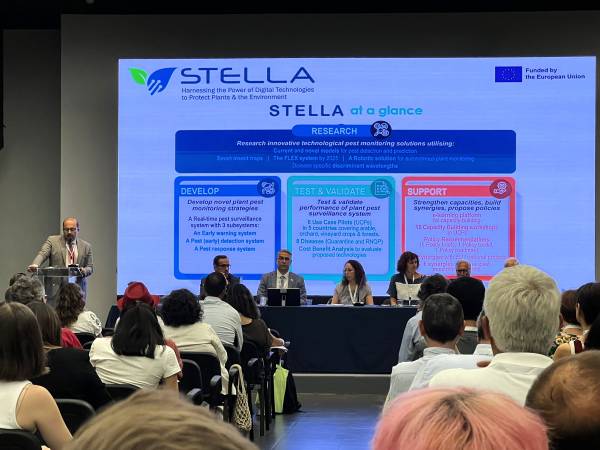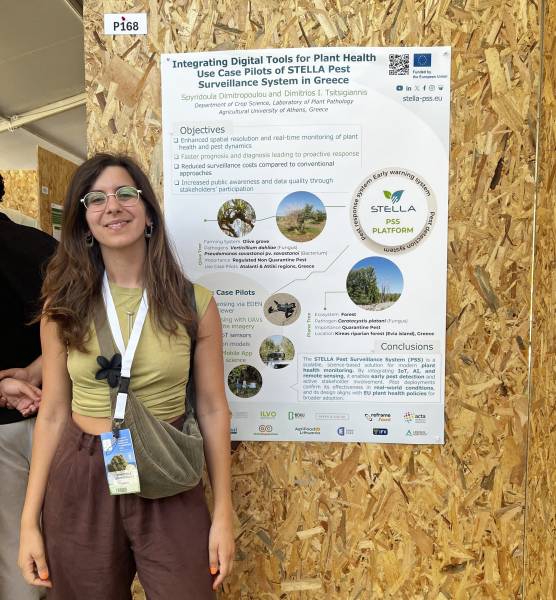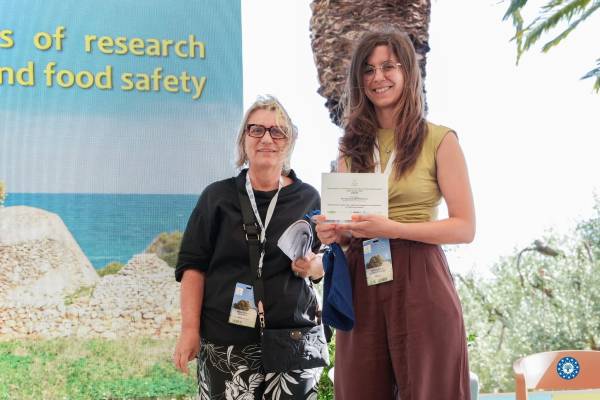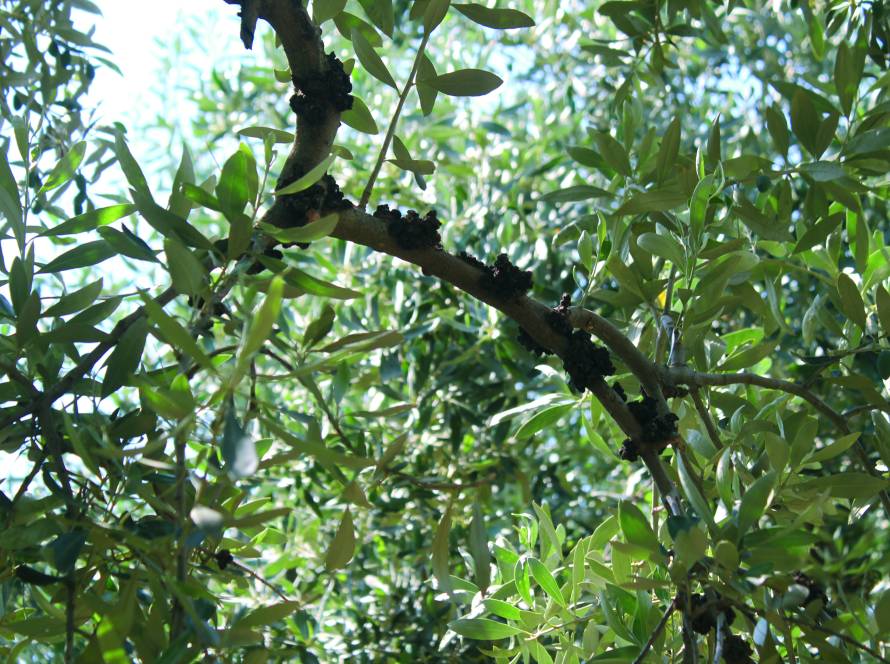By Dimitra Fourkalidou | Head of Communications | reframe.food
The 17th International Congress of the Mediterranean Phytopathological Union (MPU 2025), held from 6–10 July 2025 at CIHEAM Bari, brought together leading plant pathologists and researchers to explore new frontiers in phytopathology and food safety. With the theme “New Phytopathology Frontiers of Research and Education for Plant Health and Food Safety”, the Congress spotlighted cutting-edge innovations and collaborative strategies for a more sustainable and secure agri-food future.
The STELLA Pest Surveillance System (STELLA PSS) was prominently featured in the programme through high-impact contributions by the project’s coordination and implementation team from the Agricultural University of Athens.

Šaltinis: Atėnų žemės ūkio universitetas
Smart Digital Technologies for Plant Disease Detection
On the opening day of the Congress, Prof. Dimitris Tsitsigiannis, STELLA Project Coordinator and President of the Mediterranean Phytopathological Union, delivered a keynote presentation titled: “Smart digital and artificial intelligence technologies for plant disease detection, area surveillance and control measures.”
His talk explored the integration of AI, IoT, and digital tools into plant health monitoring strategies. Prof. Tsitsigiannis presented how the convergence of early warning systems, real-time data from sensors, image-based diagnostics, and precision spraying technologies are transforming Integrated Pest Management (IPM) across Europe. The approach supports sustainable agriculture by enabling early intervention, reducing pesticide use, and strengthening resilience against emerging plant disease threats. This work directly informs STELLA’s methodology and reinforces the project’s alignment with EU goals for green and digital transitions in plant health.
Reflecting on the experience, Prof. Tsitsigiannis expressed his appreciation for the opportunity to open the Congress, noting that “discussing cutting-edge smart IPM digital technologies and strategies to safeguard plant health and ensure food security” was an honour. He added that “the exchange of ideas and collaborations was truly inspiring,” and emphasized that “together, we’re advancing science for a healthier, more sustainable future.”
Poster Presentation: Greece’s STELLA Use Case Pilots
A poster titled “Integrating digital tools for plant health: Use Case Pilots of the STELLA pest surveillance system in Greece”, co-authored by Spyridoula Dimitropoulou, Research Associate at the Laboratory of Plant Pathology (AUA) and key STELLA team member, and Prof. Tsitsigiannis, detailed STELLA’s real-world applications across two Use Case Pilots in Greece.

Šaltinis: Atėnų žemės ūkio universitetas
The STELLA PSS is currently deployed to monitor and manage three major pathogens:
- Ceratocystis platani, a quarantine fungal agent causing canker stain in plane trees;
- Verticillium dahliae, the causal agent of Verticillium wilt; and
- Pseudomonas savastanoi pv. savastanoi, responsible for Olive Knot disease.
These pilots are implemented in diverse environments, from the Kireas riparian forest on Evia Island to commercial olive groves in Atalanti and Attiki, demonstrating the versatility and scalability of the surveillance framework. The system combines in situ IoT sensors, UAV and satellite imagery, proximal sensing tools such as the EDEN Viewer, and spatial-temporal modelling to deliver a proactive, high-resolution monitoring approach. Additionally, it fosters participatory surveillance through mobile apps and citizen science.
Award-Winning Video Highlights STELLA’s Efforts to Protect Plane Trees
At the Plenary Closing Session of the Congress, Spyridoula Dimitropoulou proudly presented the award-winning video: “Saving Greece’s Plane Trees: Digital technology for early detection of Ceratocystis platani – The Greek Use Case Pilot.”
The video received first prize in the Euphresco III Plant Health Video Contest and highlights STELLA’s innovative and interdisciplinary approach to protecting Platanus orientalis through advanced digital surveillance tools. The screening was preceded by a short presentation from Spyridoula, offering further insight into the Greek Use Case Pilot and the importance of early detection to safeguard urban biodiversity.
Spyridoula noted that participating in MPU 2025 was both inspiring and rewarding, as it fostered meaningful dialogue with plant health experts and opened new opportunities for cross-border collaboration. She added that, “on a more personal level, winning the Euphresco III Video Contest was a truly memorable achievement that showcased the power of science communication.”

Šaltinis: Atėnų žemės ūkio universitetas
A Science-Based Digital Future for Plant Health
STELLA’s visibility and recognition at MPU 2025 reaffirm the project’s leading role in the development of intelligent, digital, and scalable solutions for pest surveillance. The combination of scientific excellence, practical deployment, and stakeholder engagement underscores STELLA’s contribution to EU plant health policy objectives and its potential for replication across Mediterranean and European agricultural systems.



